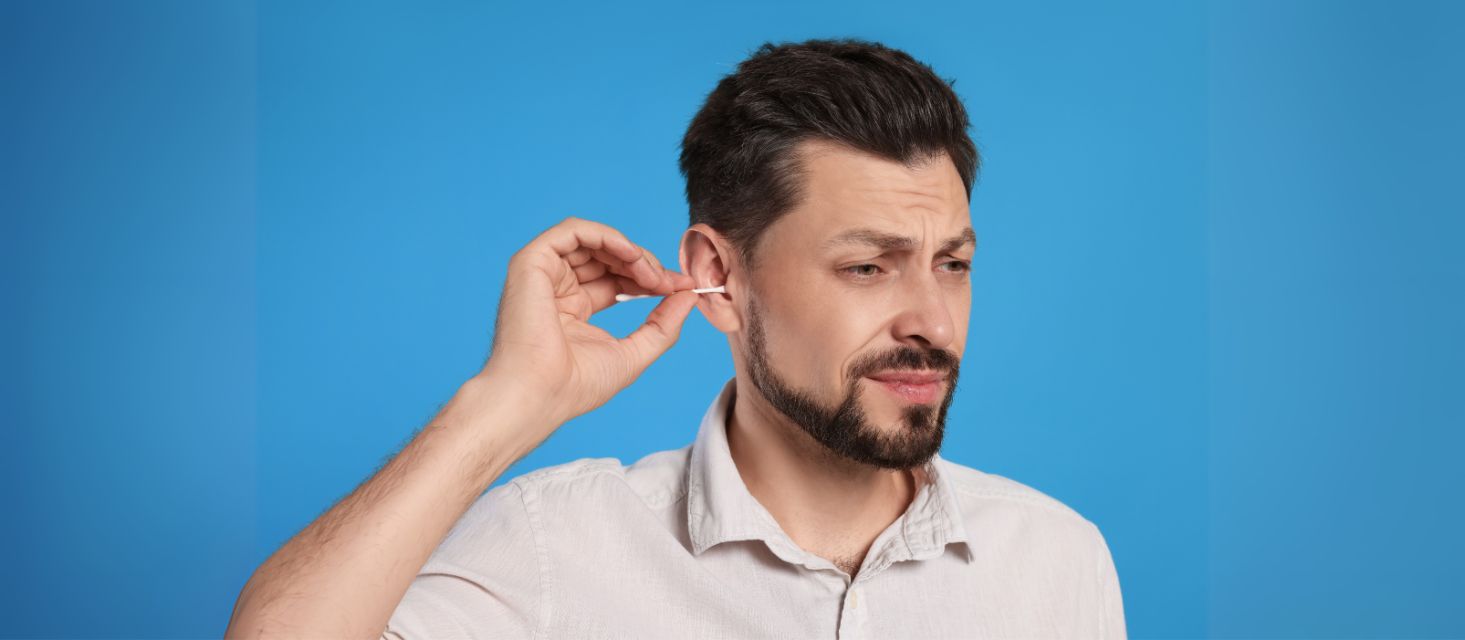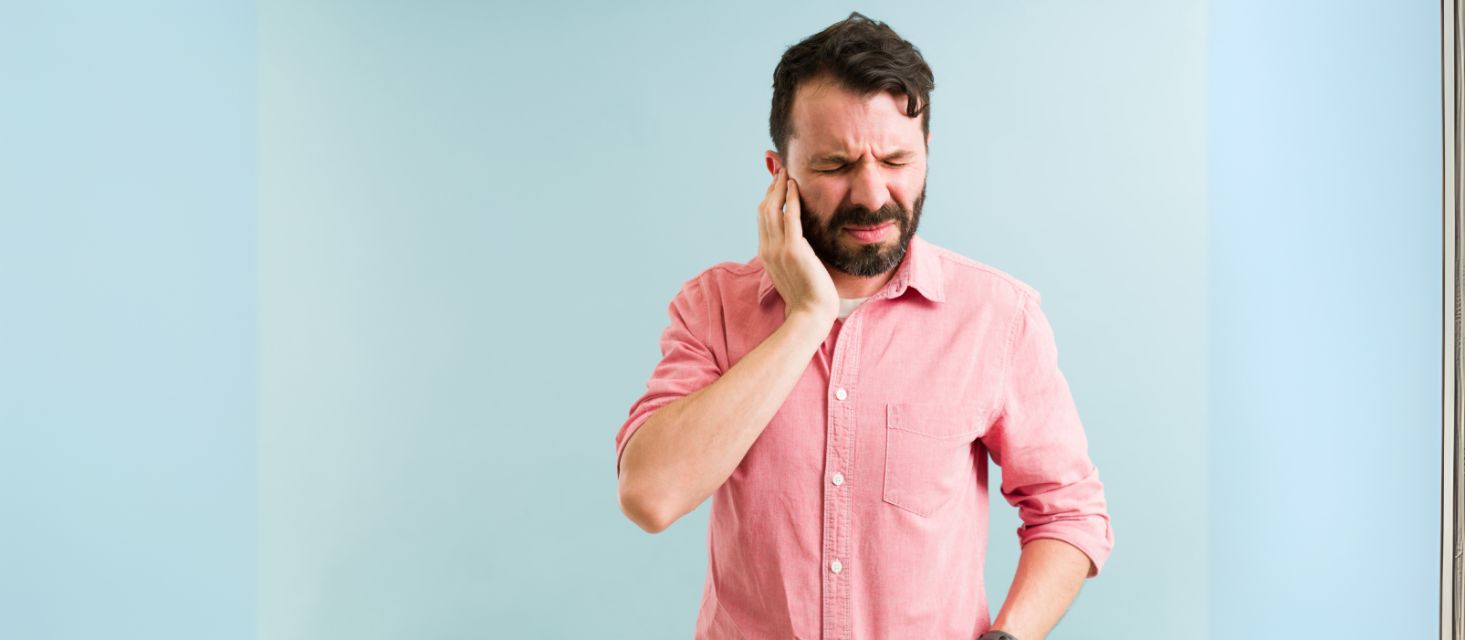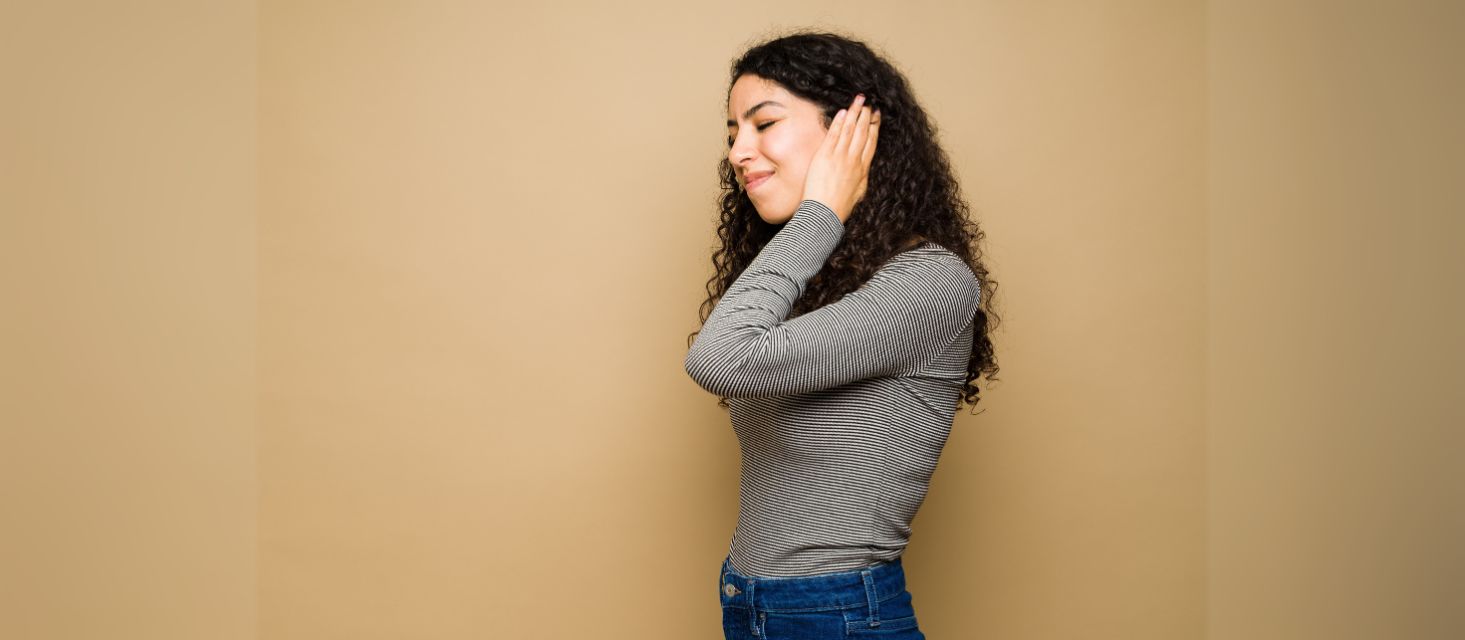If you’ve ever experienced a clogged ear, you know how uncomfortable it can be. Earwax, or cerumen, plays a vital role in protecting the ear canal from dust, foreign bodies, and infection. However, excessive earwax buildup can cause discomfort, hearing loss, and even ear infections. While there are several ways to remove earwax buildup, the two most common approaches are ear irrigation and traditional ear cleaning. This article explores the key differences between these two methods of earwax removal, helping you choose the safest and most effective option for your ear care.
For more general ear care tips, visit our news section.
What is Ear Irrigation?
Ear irrigation, also known as ear syringing, is a professional ear-cleaning method where warm water or a saline solution is gently introduced into the ear canal to flush out earwax and debris. This method is often used in GP surgeries and by experienced audiologists to provide relief for patients with impacted earwax. Learn more about what ear irrigation is.
How Ear Irrigation Works
-
Preparation: Before the procedure, healthcare professionals may recommend using ear drops or sodium bicarbonate solution for a few days to soften the wax.
-
Procedure: A controlled stream of warm water is introduced into the external ear canal using a specialized tool. Devices like the Eddy ear irrigation system ensure that the pressure remains low to prevent any damage to the eardrum.
-
Wax Removal: The warm water dislodges the wax, allowing it to flow out naturally. In some cases, stubborn wax may require additional sessions or other methods like microsuction ear wax removal.
Key Benefits of Ear Irrigation
-
Safe and Effective: When performed by a trained professional, ear irrigation is a painless procedure with minimal risks.
-
Non-invasive: The process does not involve inserting sharp objects into the ear canal, reducing the risk of injury.
-
Preferred Method for Stubborn Wax: This method is especially effective for removing impacted earwax that cannot be addressed with traditional methods.
When to Avoid Ear Irrigation
Despite its several advantages, ear irrigation may not be suitable for everyone. It should be avoided if:
-
You have an ear infection. Learn more about ear infection symptoms and treatment.
-
You have a perforated eardrum or have undergone recent ear surgery.
-
You have small tubes or other devices implanted in your ear.
If you experience dizziness, pain, or discomfort during the process, it’s important to stop immediately and consult a healthcare professional.
What is Traditional Ear Cleaning?
Traditional ear cleaning methods are those commonly used at home, including the use of cotton buds (also known as cotton swabs), ear scoops, and ear candling. While these methods are accessible and inexpensive, they come with potential risks. Learn about the best methods to remove earwax.
Common Methods of Traditional Ear Cleaning
-
Cotton Buds: Many people use cotton buds to remove earwax. However, this method often pushes the wax deeper into the ear canal, increasing the risk of impacted earwax.
-
Ear Scoops or Curettes: These small tools are designed for manual wax removal. When used correctly, they can be effective for surface-level wax but require caution to avoid injury.
-
Ear Candling: This alternative method involves inserting a hollow candle into the ear and lighting it. Despite claims that it can remove earwax, ear candling is widely discouraged by healthcare professionals due to its lack of proven benefits and higher risk of burns or injury. Curious about ear candling? Read our article on ear candles and their effectiveness.
Pros of Traditional Ear Cleaning
-
Easily Accessible: Cotton buds and ear scoops are readily available and inexpensive.
-
Quick Solution: For minor wax buildup, traditional methods can provide temporary relief.
Cons of Traditional Ear Cleaning
-
Higher Risk of Injury: Inserting objects into the ear canal can cause irritation, damage to the eardrum, or push wax further in, leading to a blockage.
-
Incomplete Wax Removal: Traditional methods often fail to remove earwax completely, leaving behind stubborn wax that can cause future problems.
-
Potential Risks: Methods like ear candling carry serious risks, including burns, ear infections, and even hearing problems.
Ear Irrigation vs. Traditional Ear Cleaning: Key Differences
|
Feature |
Ear Irrigation |
Traditional Ear Cleaning |
|
Method |
Uses water pressure to flush out wax |
Manual removal with cotton buds or scoops |
|
Safety |
Safer with proper tools and technique |
Higher risk of ear canal damage |
|
Effectiveness |
Very effective for removing stubborn wax buildup |
Less effective for deep blockages |
|
Recommended By |
Audiologists and ENT specialists |
Not commonly recommended by experts |
|
Comfort |
Generally painless when done correctly |
Can cause discomfort or pain |
|
Suitability |
Suitable for impacted earwax and blocked ears |
Suitable only for light surface wax |
Which is Better: Ear Irrigation or Traditional Ear Cleaning?
When comparing ear irrigation vs. traditional ear cleaning, ear irrigation emerges as the safer and more effective option for most patients. Devices like the Eddy ear irrigation tool, used by experienced audiologists, ensure that the process is painless and thorough. Traditional methods, though convenient, come with a higher risk of injury, incomplete wax removal, and long-term ear conditions.
For those experiencing common symptoms of earwax buildup, such as hearing problems, discomfort, or blocked ears, consulting a healthcare professional for ear irrigation or microsuction earwax removal is the preferred method.
If you're dealing with blocked ears, check out our guide on why ears feel blocked and how to resolve it.
How to Safely Unclog an Eardrum
A clogged eardrum can be caused by excessive earwax buildup, foreign bodies, or ear infections. Here are some safe ways to unclog an ear without causing further damage:
-
Use Ear Drops: Over-the-counter ear drops or a saline solution can help soften wax for easier removal. Consider using our saline sachets.
-
Try Ear Irrigation: If ear drops do not provide relief, consider ear irrigation with a professional-grade tool like Eddy.
-
Avoid Cotton Buds: Using cotton buds can worsen the blockage by pushing wax deeper into the ear.
-
Consult a Specialist: If the blockage persists, seek help from a GP or audiologist. Methods like microsuction earwax removal, which uses a fine sterile suction device under a binocular operating microscope, are highly effective for targeted removal.
A Final Word
When it comes to ear cleaning, ear irrigation offers a safer, more effective, and less invasive approach compared to traditional methods. With professional tools and guidance, you can remove stubborn wax buildup and improve overall ear health. However, if you have specific ear conditions, such as a perforated eardrum or recent ear surgery, always consult a healthcare professional before attempting any earwax removal procedure.
Remember, cotton buds and ear candling should be avoided due to their higher risk of injury and incomplete wax removal. For individuals using hearing aids or experiencing frequent earwax buildup, regular professional ear care is essential to maintain optimal hearing and prevent discomfort.
Visit our contact page to get in touch with us for more information on ear care services.
Frequently Asked Questions (FAQs)
1. Is ear irrigation better than ear vacuum?
Both methods are effective for earwax removal, but ear irrigation is generally recommended for softening and flushing out larger amounts of wax. Ear vacuums, or micro suction, are better suited for precise, targeted removal in cases where irrigation might not be suitable.
2. What is the most effective ear cleaning method?
Ear irrigation and microsuction are considered the most effective methods for earwax removal. These methods are performed by trained professionals and ensure complete removal of wax without pushing it further into the ear canal.
3. When is ear irrigation not recommended?
Ear irrigation is not recommended in cases of:
-
Perforated eardrums
-
Recent ear surgery
-
Active ear infections
4. Can ear cleaning cause pain?
When performed correctly, ear cleaning should not cause pain. However, improper use of traditional methods, such as cotton buds, can cause discomfort, pain, or even damage to the ear.








Share:
Related Blogs
Why Do My Ears Hurt? Understanding Ear Pain and Its Causes
Eddy vs. Other Earwax Removal Tools: A Comprehensive Review